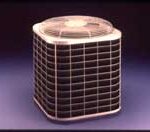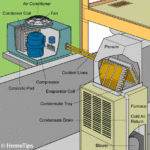Window and room air conditioners use refrigeration principles to extract heat and moisture from room air, cooling and dehumidifying the air.
The basic components inside the unit include a blower and/or fans for moving cooled air into the room and exhausting warm air, and refrigerant components for extracting heat from the air.
Those components include a compressor, evaporator coil, refrigerant-filled tubing, and condenser coil. Most window and room air conditioners have thermostatic controls.
How Does a Window or Room Air Conditioner Work?
- Room temperature reaches the thermostat’s set point, turning on the room or window air conditioner’s blower. This draws room air through the air inlet grille and a filter that removes airborne dust and particles.
- Refrigerant is pumped through tubing in the unit, initiating the refrigeration process. This refrigerant takes on and gives off heat as it raises and lowers in temperature, changing from liquid to gas and then back to liquid.
- When the refrigerant begins to circulate through the indoor coil, it is very cold. As the blower pushes warm air across the coil, the refrigerant absorbs heat and turns into vapor.
- The vapor travels to a compressor that pressurizes it and moves it through the condenser coil, where it gives off heat, which is expelled outside.
- The refrigerant then moves through an expansion device that converts it to a low-pressure, cool liquid again, which then returns to the evaporator coil.
- The cycle repeats. All the while, the blower pushes air past the cold coil to chill the air and blow it back into the room.
NEXT SEE:
• Buying the Best Window Air Conditioner or Room AC Unit
• Ductless Mini-Split Air Conditioner: Buying & Installing
• How to Repair Window & Room Air Conditioners
• How to Install a Window Air Conditioner
• Evaporative Air Coolers (Swamp Coolers) Buying Guide
• Central AC Overview
• Ceiling Fans Buying Guide



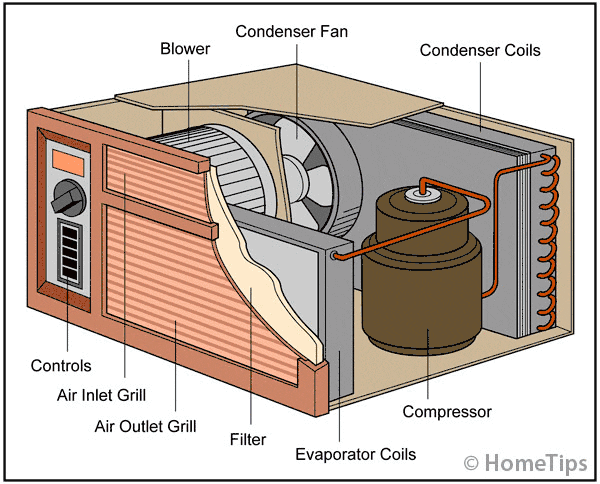

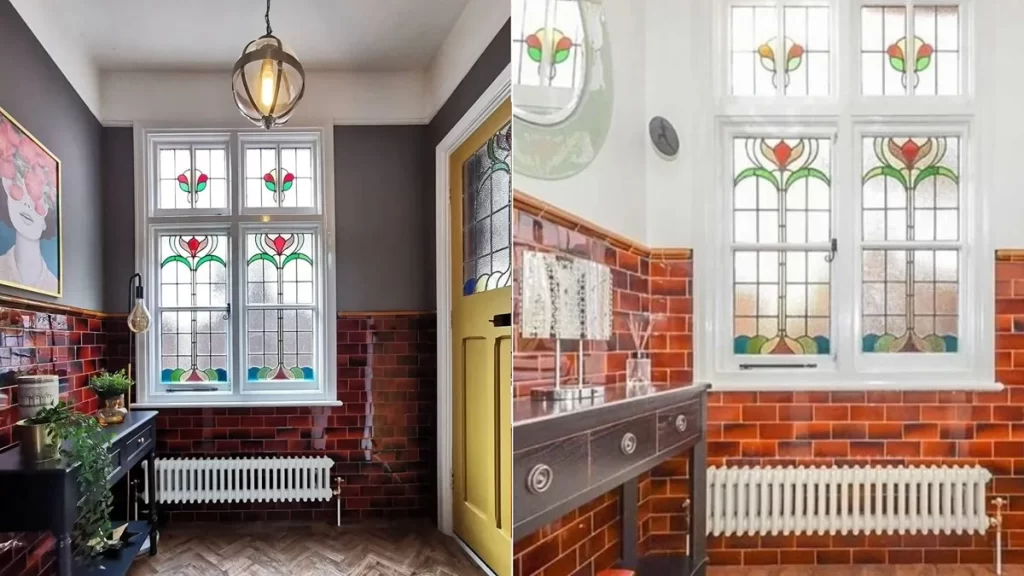

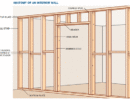
 Don Vandervort writes or edits every article at HomeTips. Don has:
Don Vandervort writes or edits every article at HomeTips. Don has:
